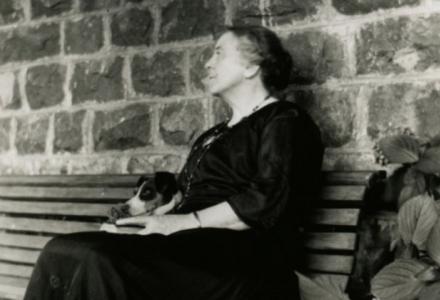Today it is impossible to imagine Melbourne’s skyline without the Shrine of Remembrance. But to the generation that built Victoria’s state war memorial, its final form was far from inevitable. The Shrine proved one of the most controversial war memorials in the world and largely because of its price tag. Costing more than £200,000 many Victorians believed the Shrine was an unsightly extravagance. They favoured the construction of a utilitarian memorial, such as a hospital, in its stead.
In the decade long debate that accompanied the building of the Shrine, many alternative memorials were considered. So far as monuments were concerned, the closest contender was the Cenotaph. A cenotaph had served as Victoria’s first memorial, long before the massive structure of the Shrine was completed. A scaled-down replica of Edwin Lutyens’ original memorial at Whitehall was raised on the steps of Victoria’s Parliament in 1926, and acted as the focal point of the Anzac Day procession in that and subsequent years.
Frances Edgeworth Somers was one of many who favoured a simple cenotaph. She wrote to General Sir John Monash, Chairman of the state’s Memorial Committee: ‘I am the mother of three sons who served in the war, two of whom have fallen … I am convinced that only a cenotaph similar in design to the one in London will appeal to the hearts of those who have suffered grief in the war.’ She argued the Cenotaph was a more intimate memorial than some massive structure raised on the Domain. It would stand in the heart of the city, within the ‘touch’ of those who grieved.
Mrs Edgeworth Somers’ eldest boy Noel went missing at Gallipoli in 1915. Despite vague hopes he may have been taken prisoner nothing more was heard of him. Noel’s brother Gervase enlisted within days of his 18th birthday, determined to follow the example the two older lads had set. A ‘dear little boy’, he was killed in France just a few weeks before the war ended. Mrs Edgeworth Somers ‘took the loss of her two sons so badly’. She had a claim to speak for the bereaved.
In the end, the Shrine was built against the wishes of a great many of Melbourne’s mourners. Once complete, the Shrine was seen by many as a soldier’s, rather than a mother’s, memorial. The first dawn services held there were exclusively the preserve of men. So, women like Frances Edgeworth Somers sought other places to grieve. She helped fund a Cross of Sacrifice (another adoption of an imperial symbol) in her hometown of Mornington and commissioned an honour roll in the town hall. And she wrote poetry to remember Noel and Gervase, tributes in words far more heartfelt than a monolith of stone:
Little son with deep blue eyes
Like shadows on the azure skies
Sun kissed curls that seemed to dance
Do you really lie in France?
…
Soldier son that left that day
Kissed me softly, seemed so gay
I wonder do you know, perchance
My broken heart lies too in France?
Frances Edgeworth Somers’ story offers a rare and poignant insight into the private domain of grief. Paradoxically, it also shows the way bereaved parents mobilised to publicly commemorate their loss. At the centrepiece of her story is the Cenotaph itself, a symbol of Empire, an empty tomb, and a memorial whose strong vertical lines strived to achieve a kind of weightlessness. Verticality, historians have argued, signifies hope. The heavy horizontal lines of the Shrine, by contrast, speak the sombre language of mourning. Both commemorative forms were considered in Melbourne, and the memorials the community ‘lost’ are just as expressive as those it raised.



